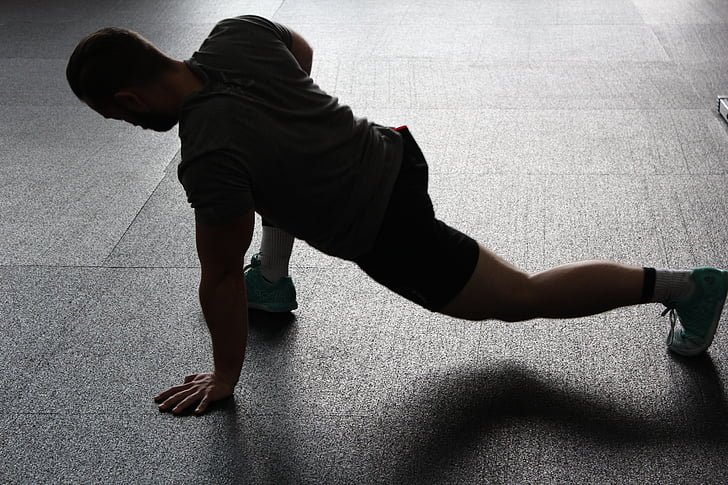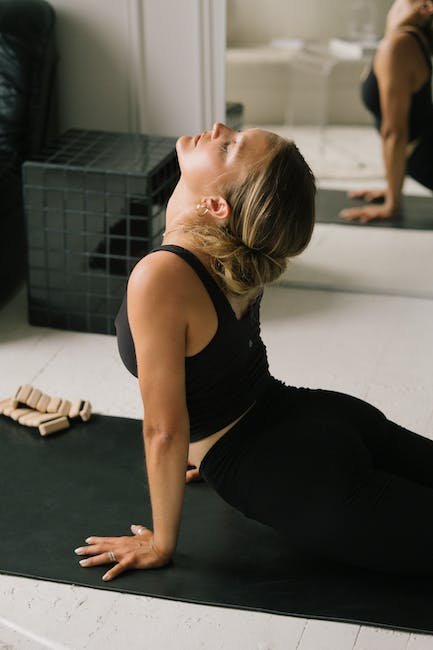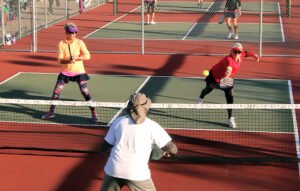Floating in the vast ocean of fitness trends, virtues like intensity and resilience often steal the spotlight, leaving their more subdued counterparts hidden in the shadows. Yet, silently working their magic behind the scenes, lie the unsung heroes of recovery: static stretches. These humble exercises, often overlooked and undervalued, possess an unparalleled ability to restore tired muscles, enhance flexibility, and provide a sanctuary for rejuvenation. Like gentle whispers that caress the body and calm the mind, static stretching offers a path to physical and mental restoration. In this article, we delve into the world of these overlooked heroes and highlight their crucial role in the dance of recovery, inviting you to uncover the transformative power of these silent saviors.
Table of Contents
- The Importance of Static Stretching for Recovery
- Understanding the Benefits of Static Stretching
- Effective Techniques for Incorporating Static Stretching into Your Recovery Routine
- Maximizing the Benefits of Static Stretching with Targeted Exercises
- Key Considerations for Safely Implementing Static Stretching into Your Recovery Protocol
- Q&A
- The Conclusion

The Importance of Static Stretching for Recovery
After an intense workout or physical activity, it’s crucial to prioritize your body’s recovery. While there are various methods to aid in recovery, one practice that should not be overlooked is static stretching. Not only does it improve flexibility, but it also plays a significant role in reducing muscle soreness and preventing injuries.
When you engage in static stretching, you hold a stretch position for a prolonged period, typically between 15 to 60 seconds. This method allows your muscles and tendons to relax and elongate, promoting a better range of motion. It’s important to note that static stretching is most effective when performed after exercise, as it helps cool down the body and return heart rate and breathing to normal levels.
Benefits of static stretching include:
- Injury Prevention: Regularly practicing static stretches can enhance joint flexibility and muscle suppleness, reducing the risk of strains and sprains.
- Muscle Recovery: By stretching your muscles after exertion, you increase blood flow to those areas, aiding in the removal of waste products and promoting faster recovery.
- Enhanced Performance: Improved flexibility not only allows for a greater range of motion, but it can also optimize muscle recruitment and overall performance in physical activities.
Remember, incorporating static stretching into your post-workout routine can have long-term benefits for your body, keeping you on track with your fitness goals and ensuring a healthier, injury-free lifestyle.

Understanding the Benefits of Static Stretching
Static stretching is a widely practiced technique in which you stretch a muscle and hold it in a fixed position for a certain period of time. Many fitness enthusiasts swear by its ability to improve flexibility and enhance overall physical performance. But what exactly are the benefits of static stretching? Let’s explore a few of them:
– Improved Flexibility: One of the primary benefits of static stretching is its remarkable impact on flexibility. Performing static stretches regularly can gradually increase the range of motion in your muscles and joints, making it easier to perform movements without discomfort or strain.
– Enhanced Muscular Recovery: Engaging in strenuous physical activities puts stress on your muscles, leaving them fatigued and tight. Static stretching after a workout can help reduce muscle soreness and speed up the recovery process by increasing blood flow to the muscles and flushing out waste products.
– Relaxation and Stress Relief: Static stretching is not just beneficial for the body but also for the mind. Taking a few moments to stretch and breathe deeply can help activate the body’s relaxation response, reducing stress levels and promoting a sense of calm and well-being.
– Injury Prevention: Maintaining good flexibility through static stretching can play a crucial role in preventing injuries. By increasing your muscle elasticity and joint mobility, static stretching helps prepare your body for physical activities and reduces the risk of strains, sprains, and other musculoskeletal injuries.
Incorporating static stretching into your fitness routine can bring about numerous benefits, both for your body and mind. Remember to stretch each muscle group slowly, holding the stretch for about 15-30 seconds to achieve optimal results. Stay consistent, and soon you’ll witness the positive impact that static stretching can have on your overall well-being.
Effective Techniques for Incorporating Static Stretching into Your Recovery Routine
Revitalizing your body after a tough workout is crucial for promoting muscle recovery and preventing stiffness. One highly effective method to include in your recovery routine is static stretching. By holding each stretch for a prolonged period, you can improve your flexibility and range of motion, while also reducing muscle soreness and tension.
To make the most out of static stretching, here are some techniques that you can incorporate:
- Vary your stretches: Engage different muscle groups by incorporating a wide variety of static stretches. This ensures that all areas of your body receive equal attention, promoting overall balance and flexibility.
- Focus on proper form: Pay attention to maintaining correct form while performing each stretch. This can be done by aligning your body, keeping your core engaged, and avoiding any jerky movements.
- Combine with deep breathing: Incorporate deep breathing techniques while holding each stretch to enhance relaxation and reduce stress levels. Inhale deeply through your nose, filling your lungs, then exhale slowly through your mouth, allowing your muscles to release tension.
- Extend duration gradually: Start with shorter durations, such as 15-20 seconds, and gradually increase the time to 30-60 seconds per stretch. This gradual progression helps your muscles adapt and become more flexible over time.
- Be consistent: To experience long-term benefits, consistency is key. Include static stretching into your recovery routine after every workout session to optimize its positive effects.
Remember, incorporating static stretching into your recovery routine not only helps your body relax and recover but also contributes to overall fitness and well-being. So, take some time to stretch, unwind, and embrace the rejuvenating power of static stretching.

Maximizing the Benefits of Static Stretching with Targeted Exercises
When it comes to improving flexibility and overall muscle health, static stretching has long been hailed as a go-to method. However, if you truly want to maximize the benefits of your stretching routine, it’s important to incorporate targeted exercises into your regimen. These exercises focus on specific muscle groups, helping to increase the effectiveness of your stretches and optimize your workout routine.
One strategy to optimize your static stretching routine is to combine it with dynamic exercises that target the same muscles. For example, if you’re looking to improve your hamstring flexibility, start by performing a set of dynamic leg swings that activate and warm up the muscles in that area. Follow this with a series of static stretches, such as seated hamstring stretches or standing toe touches, to deepen the stretch and increase your range of motion.
Another effective approach is to pair static stretching with strengthening exercises. By incorporating strength-training exercises that target the muscles you are stretching, you can enhance both your flexibility and overall muscle tone. For instance, if you’re focusing on your quadriceps, incorporate exercises like squats or lunges into your routine, alongside quad stretches. This combination will not only improve your flexibility but also help build strength and stability within the muscle group.
- Remember, maintaining proper form during both static stretches and targeted exercises is crucial for injury prevention.
- Be consistent and gradually increase the intensity and duration of your stretches and exercises over time.
- Consult with a professional trainer or physical therapist if you’re unsure about the best exercises or stretches for your specific goals or limitations.
By incorporating targeted exercises into your static stretching routine, you can take your flexibility and muscle health to new heights. So why settle for just the benefits of stretching alone? Combine it with targeted exercises and unlock your body’s full potential!
Key Considerations for Safely Implementing Static Stretching into Your Recovery Protocol
When it comes to maximizing your recovery and preventing injuries, incorporating static stretching into your protocol can provide numerous benefits. However, it’s crucial to approach it safely and mindfully. Here are some key considerations to keep in mind:
- Warm-up is essential: Before diving into static stretching, ensure your body is properly warmed up. Engage in light aerobic exercises or dynamic stretching to increase blood flow, warm up your muscles, and prepare them for the stretching routine ahead.
- Don’t overstretch: Although it may be tempting to push for a deeper stretch, it’s important to know your limits. Overstretching can lead to muscle strain or even tears. Focus on maintaining a comfortable stretch and avoid any sharp or intense pain.
- Hold, don’t bounce: Unlike dynamic stretching, which involves movement, static stretching requires holding a stretch for a prolonged period. Avoid bouncing or jerking movements, as they can cause injury. Instead, hold each stretch for 20 to 30 seconds, gradually increasing the intensity over time.
- Breathe and relax: Relaxing into each stretch is key to fully engage the muscles and promote flexibility. Take deep breaths throughout the stretching routine, exhaling slowly as you deepen the stretch and release any tension.
- Incorporate variety: To target different muscle groups and prevent imbalances, incorporate a variety of static stretches into your recovery protocol. Focus on areas that are prone to tightness or have experienced recent physical stress.
By following these key considerations, you can safely implement static stretching into your recovery protocol and unlock its benefits for enhanced flexibility, improved range of motion, and injury prevention. Remember, consistency and proper technique are essential for achieving optimal results.
Q&A
Q: What is static stretching?
Static stretching refers to the technique of holding a stretch position for a specific duration without movement. It is commonly used to increase flexibility and improve muscle length.
Q: Can static stretching be incorporated into a recovery routine?
Absolutely! Static stretching after a strenuous workout can aid in reducing muscle soreness and improving recovery by promoting blood flow and flushing out waste products from the muscles.
Q: What are the benefits of including static stretching in a recovery routine?
Static stretching not only helps increase range of motion, but it also helps to relax tense muscles, alleviate muscle imbalances, decrease the risk of injury, and promote overall muscle recovery.
Q: When is the best time to perform static stretching for recovery?
The optimal time for static stretching is after a workout or physical activity, as it helps to cool down the body and relax the muscles. This allows the body to transition from an intense state to a more relaxed state.
Q: How long should static stretches be held for during recovery?
Each stretch should be held for around 20-30 seconds to give the muscles enough time to respond and lengthen. However, it’s important not to overstretch or hold a stretch to the point of pain.
Q: Can static stretching be done before a workout for recovery purposes?
While static stretching is commonly done after a workout, it can also be beneficial before a workout to increase muscle pliability and help prevent injury. However, it is advised to perform dynamic warm-up exercises before exercising and save longer static stretches for post-workout.
Q: What are some effective static stretching exercises for recovery?
Some effective static stretches for recovery include hamstring stretches, quad stretches, calf stretches, and chest stretches. It’s important to focus on stretching the major muscle groups used during the workout or activity.
Q: Can static stretching be helpful for general relaxation even without exercise?
Yes, static stretching can be a great way to unwind and relax even without exercise. It promotes muscle relaxation, releases tension, and helps improve overall flexibility and mobility. It can be a wonderful addition to a daily routine for anyone looking to destress and improve their overall well-being.
Q: Are there any precautions to consider when incorporating static stretching into a recovery routine?
It is important to avoid bouncing or jerking movements during static stretches to prevent injury. Additionally, individuals with certain medical conditions or injuries should consult with a healthcare professional before starting any new stretching routine to ensure it is safe for them.
The Conclusion
As we bid adieu to the world of static stretching and recovery, we can’t help but feel a sense of gratitude towards these unsung heroes. Though often overlooked and overshadowed by grueling workouts and intense training, their significance cannot be understated. Their quiet presence has been an unyielding force, gently guiding us towards optimal performance and ultimate relaxation.
Like a serene symphony that lulls us into a state of tranquility, static stretching ripples through our bodies, releasing tension and inviting flexibility. It grants our muscles the gift of elongation, reminding them of their natural grace and ease. With each stretch, we embark on a journey of rediscovery, charting new territories of untapped potential.
But it is in the realm of recovery that these unsung heroes truly shine with an ethereal glow. A gentle sea breeze swirling around us, they whisk away the remnants of exertion and fatigue. Healing hands reaching out, they mend and restore, breath by breath, muscle by muscle. They are the keepers of our bodies’ fragile ecosystem, delicately tending to the delicate balance between strength and vulnerability.
In their subtlety lies their power, their unassuming nature offering solace and respite when we need it most. They champion the art of being present, allowing us to reconnect with our bodies and the deepest recesses of our souls. When the world moves too fast, they ground us, grounding our spirits and reminding us to listen to the whispers of our inner selves.
So, as we close this chapter on static stretching and recovery, let us remember to honor these unsung heroes. Let us choose grace over haste, stillness over chaos, and restoration over stagnation. In doing so, we pay homage to the profound impact they have on our physical and mental well-being.
As we step forward into the uncharted territory that lies ahead, let us embrace the wisdom of these unsung heroes. They have whispered their secrets to us, revealing that sometimes the quietest paths lead to the most profound transformations. So, dear reader, may you find solace in stretching, rejuvenation in recovery, and ultimate harmony in the dance between effort and ease. Farewell, until we meet again on the peaceful shores of static stretching and recovery.
As an affiliate, my content may feature links to products I personally use and recommend. By taking action, like subscribing or making a purchase, you’ll be supporting my work and fueling my taco cravings at the same time. Win-win, right?
Want to read more? Check out our Affiliate Disclosure page.




